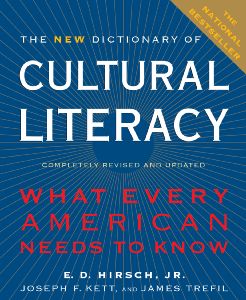
The New Dictionary of Cultural Literacy
What Every American Needs To Know
کتاب های مرتبط
- اطلاعات
- نقد و بررسی
- دیدگاه کاربران
نقد و بررسی

September 30, 2002
This third edition of the 1988 reference, full of the same back-to-basics philosophy of the earlier volumes, promises to once again serve as a lightning rod for lively discussion. Divided into chapters such as "The Bible" (the editors point out that, regardless of one's religion, it is impossible to be culturally literate without some Biblical knowledge, just as one needs to know the Koran to be literate in Arab culture), "Technology," "Idioms," "World Geography," "Mythology and Folklore" (which includes everything from Medusa to Mickey Mouse) and "Literature in English," the book is a compendium of thumbnail definitions of the bedrock items that make up society. This latest volume includes about 500 (out of nearly 7,000) new entries, 200 of which are in the science and technology chapters. Other entries have been revised and updated. It's entertaining, snappily written, extremely handy and reasonably inclusive (although there are bound to be readers who will find issue with Hirsch's well-known conservative ideologies). Although the book will be a godsend for home schoolers and teachers looking to give students a basic reference, ultimately it may be seen as a giant list, along the same lines as the much-debated list of essential literature that Harold Bloom included in The Western Canon. Arguments over it will probably not center on its stylistics, but on who or what the editors consider essential—e.g., Allen Ginsburg made the cut; Jack Kerouac did not.

June 1, 2002
The first edition sold more than one million copies, and the number of entries in this new edition has been upped by 500 (to 6000), so what are you waiting for?
Copyright 2002 Library Journal, LLC Used with permission.

May 15, 2003
\deflang1033\pard"The New Dictionary of Cultural Literacy "is the most recent list of "background knowledge needed to be able to read with understanding." Hirsch published "Cultural Literacy: What Every American Needs to Know "(Houghton) in 1987, the "Dictionary of Cultural Literacy" in 1988 (Houghton), and a revised "Dictionary "in 1993 (Houghton). He believes that "shared information is the foundation of our public discourse . . . that allows us to comprehend our daily newspapers and news reports, to understand our peers and leaders, and even to share our jokes. Cultural literacy is the context of what we say and read." The compilers selected items "likely to be known by a broad majority of literate Americans" and of "lasting significance."
"Cultural Literacy" was praised as the most important book on education to appear in years but also criticized as being elitist and conservative, with most of the entries in use for at least 100 years and an emphasis on print media. The authors produced the third edition "to keep up with the changes in American culture," adding 500 new entries, 200 in the "Science and Technology" section, and updating 1,000 others. Internet and computer-related terms "(FAQ, laptop, snail mail") are among the most important additions.
The 7,000 entries are arranged alphabetically within 23 sections, including "The Bible," "Fine Arts," "World and American History," and "Physical, Earth, and Life Sciences." Entries include brief definitions and cultural associations, such as "an olive branch is now regarded as a sign of peace, as is the dove."
"The New Dictionary of Cultural Literacy" is a tool for assessing cultural literacy, not a first choice for definitions of terms. It should not be compared with other specialized dictionaries, especially popular culture compendia. In it, "Java" is an island in Indonesia, not programming language or Starbucks staple, and "Pluto" is a planet and the god of the underworld, not a cartoon dog. Popular with trivia fans and familiar to educators, this resource will be requested in academic, high-school, and public libraries. (Reprinted with permission of Booklist, copyright 2003, American Library Association.)

























دیدگاه کاربران